BACK TO WEATHER-BLOG MENU
New! Fine Art Prints & digital images for sale-
Welsh Weather & Dyfi Valley landscapes Slide-Library - Click HERE
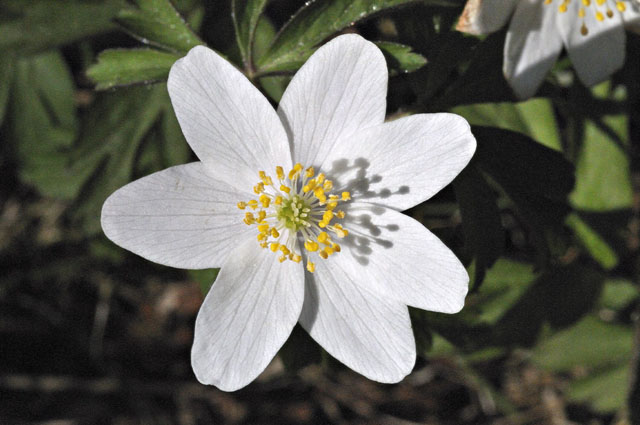
I've taken lots of shots of the spring flowers before but I liked the 'odd one out' pattern in this image!

In the garden, a glut of purple-sprouting broccoli has seen me giving the stuff away at the pub at times...
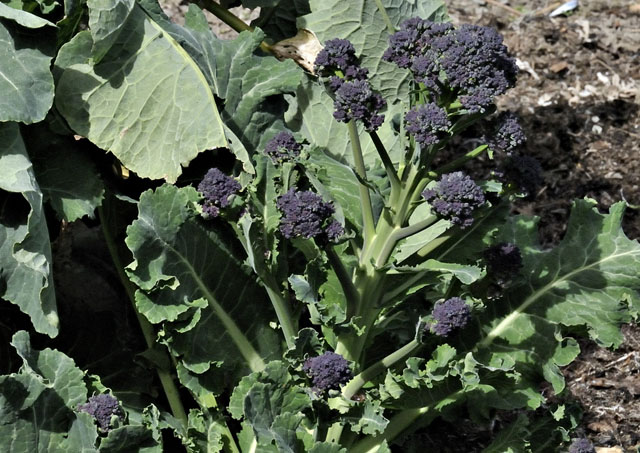
...or, with the Swiss chard, from plant to pan and onto the fire to go with whatever had been barbecued. This is the best way to eat fresh veg - far better than the sweaty, clingfilm-wrapped stuff that supermarkets sell!

But often there has been little time for such relaxed pursuits. What with work and posting articles for Skeptical Science it's been a rather busy period. Mid-April onwards saw me regularly visiting parts of Snowdonia during the first phase of a Snowdonia National Park interpretation project concerning the geology of the district and one Charles Darwin who visited and walked over the area in August 1831, taking geological notes on his way. The idea was to illustrate the rocks he observed as he made his way from Bethesda and its great slate-quarries up to Ogwen and Cwm Idwal and then, via Ffestiniog, to Barmouth. Now, illustrating rocks by cutting and polishing them works really well. The only downside is that to get decent-sized polished slabs, you need decent-sized rocks to start with - boulders in other words!
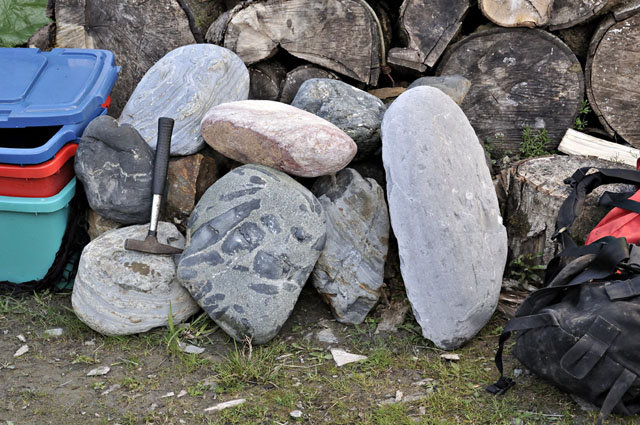
The task began with the collection of a few erratics - boulders transported and dumped by glaciers during the last ice-age, which litter river-beds and beaches hereabouts.... in some cases accompanied by more recent material! This is at Tonfanau, where coastal erosion has brought down some wartime buildings that were part of the large Army camp that was situated there. The slabs of red brick, wave-rounded and emerging from the sands, make fascinating subjects for the camera. It makes me wonder what sedimentary rocks might look like millions of years into the future - will manmade artifacts show up like fossils?

The idea was to collect a complete geological time-section of the rocks that make up Snowdonia. Ranging the forest-tracks of Coed y Brenin provided a wealth of Cambrian rocks (541-489 million years ago). This is a freshly-quarried block of pebbly sandstone from the Rhinog Formation - the stuff that makes up the craggy mountains of the Rhinogydd, but here nicely unweathered. The red quartz pebbles are a distinctive feature of these rocks, formed when Wales was part of a tiny sliver of continental crust called Avalonia, situated just off the northern margin of Gondwana, a large continent straddling the South Pole. Over the hundreds of millions of years since then, the remnants of Avalonia have drifted slowly northwards, crossing the equator until they reached their modern-day latitude, became colonised by humans and much later again became divided up into countries. Being a geologist puts things like nationalism into context!
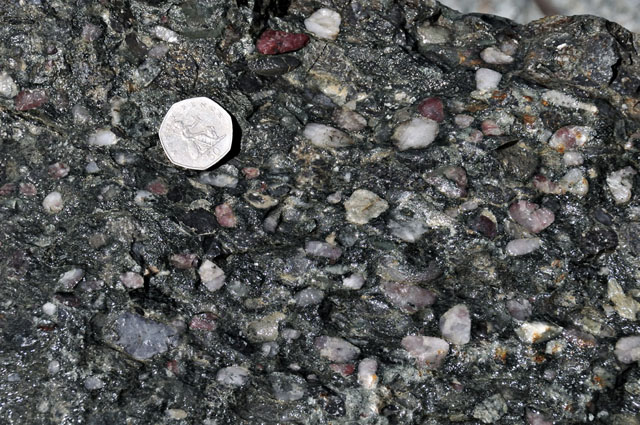
Geological time is a hard thing to visualise, just as light-years, the way that distances in Space are expressed, are almost impossible to imagine compared to distances on Earth. To help with geological time, I devised the diagram below for teaching purposes. Using Excel, the 12-month human calendar and the geological timescale as given by the International Commission on Stratigraphy, it becomes possible to measure Earth history against one human year, with Earth coming into being on the first second of New Years' Day and now being the last second of New Years' Eve. The Cambrian is the first division of the Paleozoic Era of the Phanerozoic Eon, and although 541 million years ago seems a lot we are already into late November when it started!
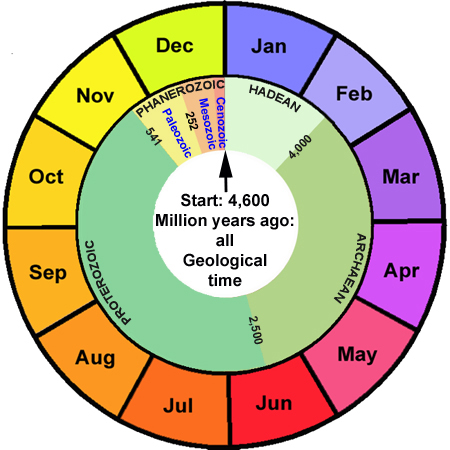
Life was already well-established by then and I was able to represent it with this slab of fossil brachiopods from the Upper Cambrian in Coed y Brenin - one that we'll leave unpolished:
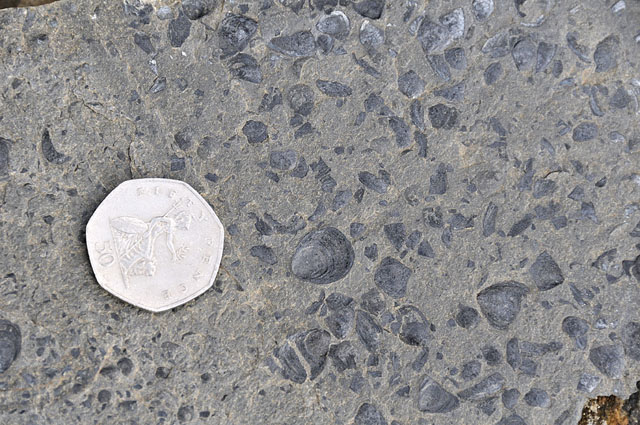
Into the Ordovician (489-443 million years ago): the rocks from Ffestiniog up past Snowdon to Cwm Idwal are all of this age. They record sediment deposition in a marine basin, interspersed with rather violent, explosive volcanic activity. Welsh Slate Ltd helpfully gave me access to their Cwt y Bugail Quarry, high above Blaenau Ffestiniog, where parts of this story are well-represented - not only in the slate, which is severely squashed mudstone.....
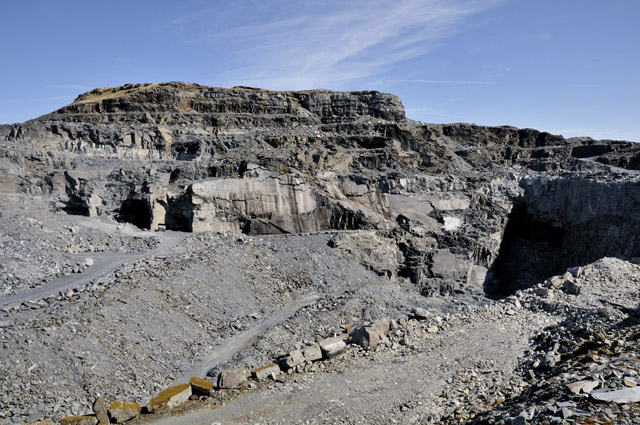
...but in the rocks formed by the explosive volcanism. This is a crystal lithic tuff, which in English means that it is volcanic ash that contains lots of crystals (the creamy-white bits) and rock-fragments, broken by the explosive force of the volcanic activity....
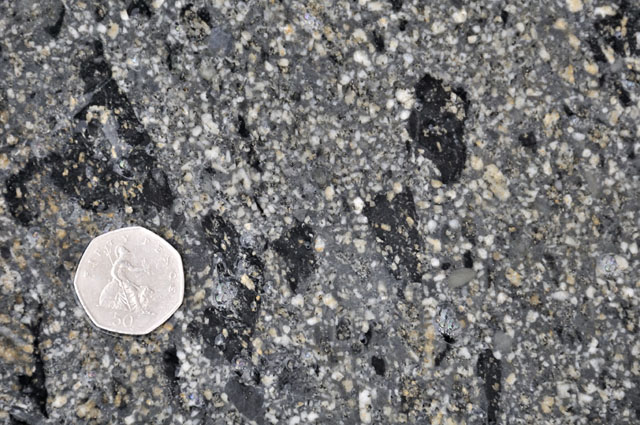
....and this is tuffite from the Rhiw-bach Volcanic Formation - fine volcanic ash that was deposited in layers with sediment, on the sea-bed. These are going to look pretty impressive once cut and polished!

Local stonemason Joseph Jones of Maentwrog accompanied me on some of these collecting forays and it gave us both insights into the way we view rocks, which for me added a great deal of interest to the job.
First Hydro also helpfully gave me access to the service-road up to the Stwlan Dam, which is situated at almost 600m above sea-level in the Moelwyns, with extensive views southwards past Llyn Trawsfynydd to Cadair Idris. Although some boulders simply had to be manhandled down steep hillsides, getting vehicular access to certain places made the job a lot less backbreaking!
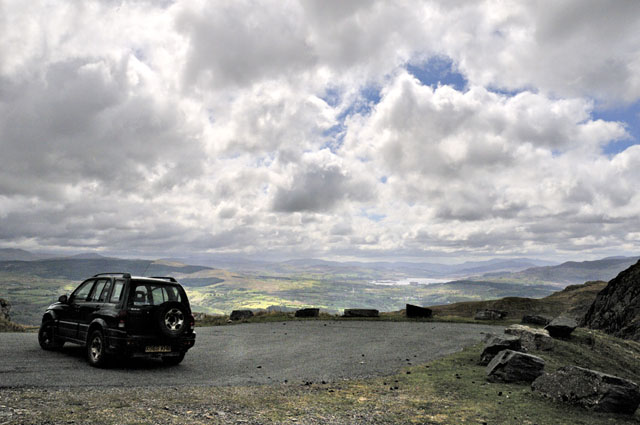 72
72This is volcanic breccia from the Moelwyn Volcanic Formation - angular fragments of lava and other rocks that were caught up in a submarine landslide all that time ago in the southern hemisphere!
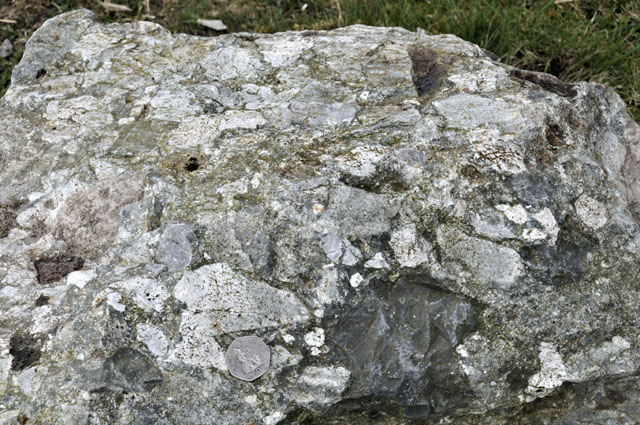
The morning of the same day (May 24th) revealed fresh snow on the Arans, seen here from near Dolgellau....
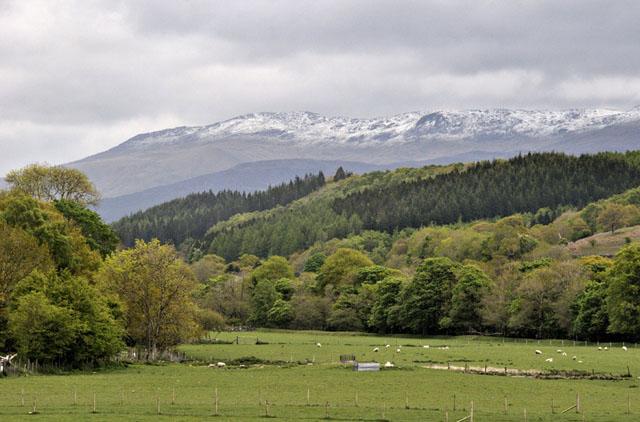
...but only three days later this was the scene in a warm and sunny Cwm Idwal. Here I collected explosively-formed rocks of the Lower Rhyolitic Tuff Formation, which mark a truly stupendous volcanic blast: it is estimated that some 50-60 cubic kilometres of hot ash were blasted out of the ground during this one event. Remember the incredible explosion of Mount St Helens in May 1980? That threw out just 2.79 cubic kilometres though it had the energy of a 20-megaton nuke. These crags in Cwm Idwal, lapped by the clear and peaceful waters of Llyn Idwal, record something that, comparatively, was off the scale.
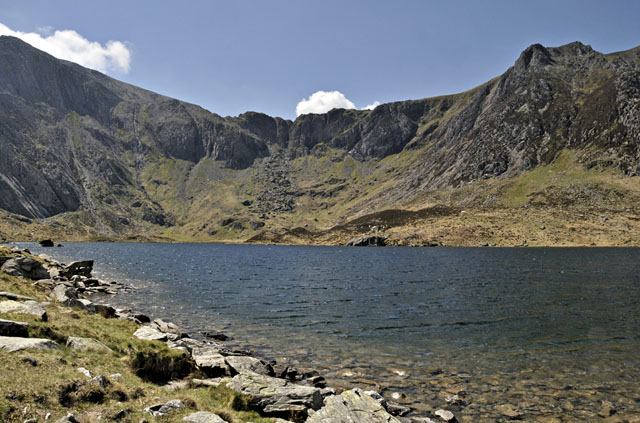
The interpretation will be installed at Ogwen, from where the paths leading up into Cwm Idwal start. Several visits to its immediate surroundings were made in a variety of weather conditions - on the morning of the 14th I stopped to capture the dappled sunlight on Tryfan, the mountain that stands sentinel-like high above the A5 on its way to Ogwen....
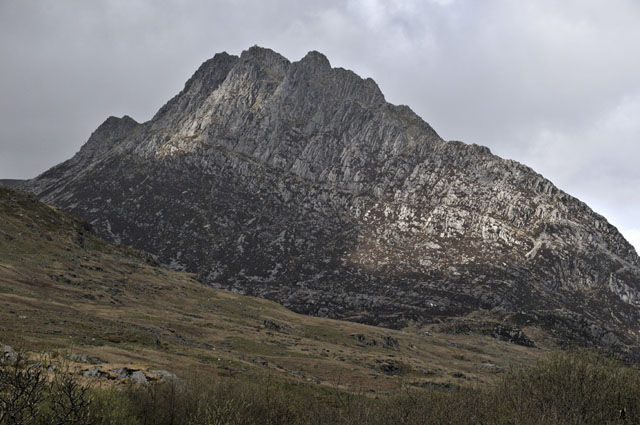
Later on the same day, sleet showers (snow at height) swept in as I was selecting material at Penrhyn Quarry near Bethesda...
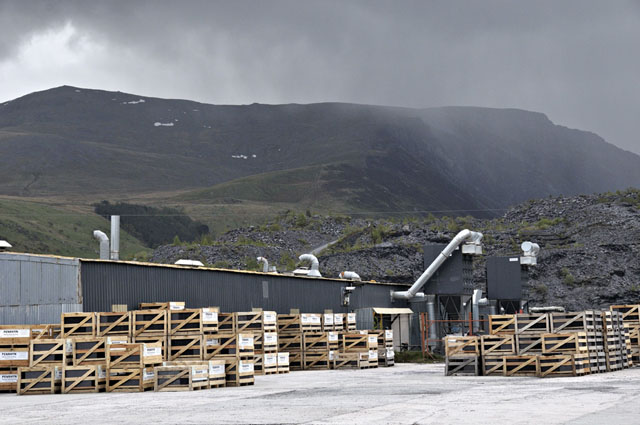
Penrhyn, also operated by Welsh Slate Ltd, produces the world-famous red, green, blue and grey slates from the Llanberis Slates Formation (we're back in the Cambrian again here), plus by-product material from other rocks in the vicinity.

These pebbly sandstones belong to the Bronllwyd Grits Formation - again they should look great when polished-up!
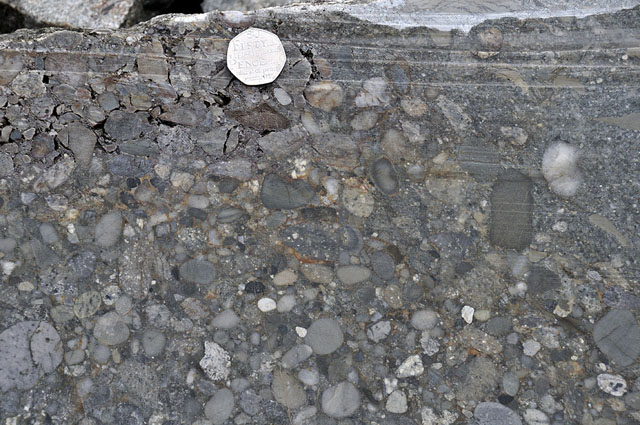
Day blurred into day as the boulder-stash expanded and my arms stretched accordingly. One evening I caught this shot of mist clearing Snowdon and the sun glinting off the pipes that convey water to the hydro-plant at Cwm Dyli, on my way back down to the National Park study-centre at Plas Tan y Bwlch, where each trip's gatherings were deposited...
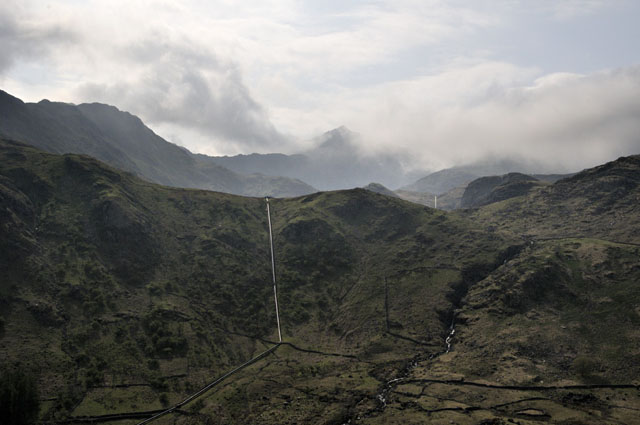
The collection grew.....
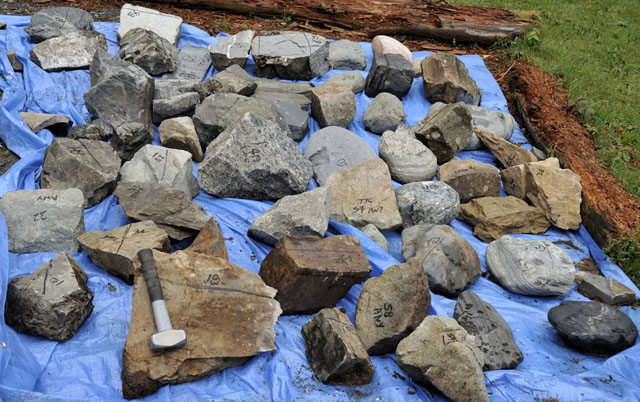
and grew.....
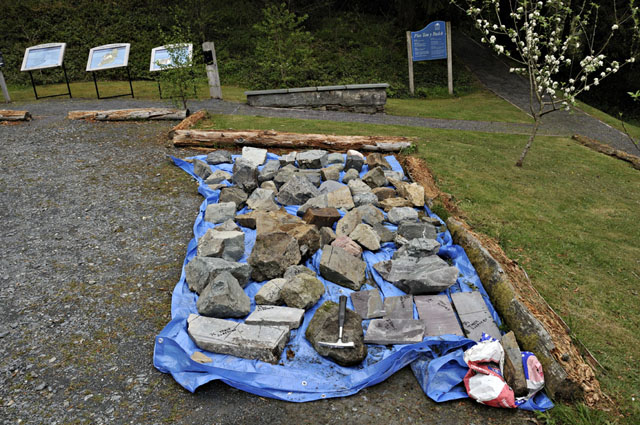
...and grew a bit more....
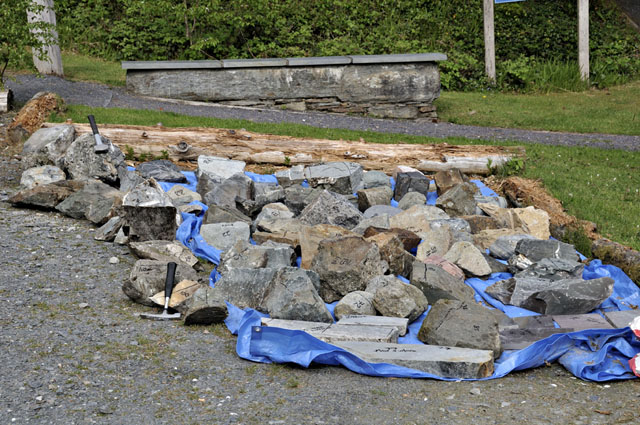
...until the final stash of 125 blocks was ready to take to the Cerrig Granite Company's workshops in Pwllheli, which was done on May 30th. On that day, collecting the final two pieces of this geological jigsaw, I was up a quiet wooded valley where streams chattered and spring flowers studded the turf. High crags soared above and the warm spring sun emerged from its grey shroud. Being close to my vehicle as I sorted through some relatively tedious grey siltstones, trying to find one that could be cut and polished without falling apart, I had left the door open, the keys in the ignition and Radio 5 on. In one direction, such peace: in the other, through my speakers there came the verdicts in the April Jones trial: a stark confirmation of the evil that visited our community a few months ago. The contrast between the two could not have been more profound.
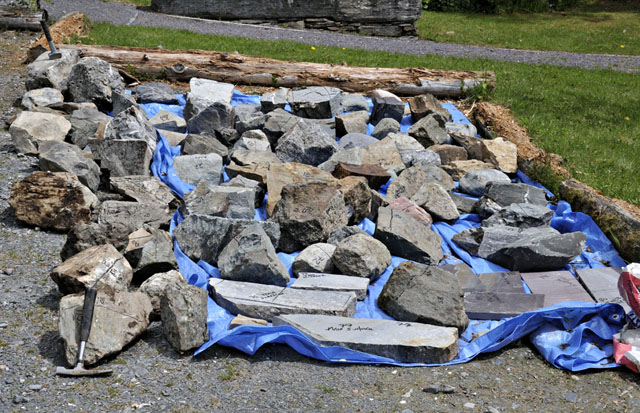
Cutting and polishing - the next phase of the project - is now getting underway. The diversity of different rocks that an ancient sea and a few volcanoes can produce will have to be seen to be believed! I'll photograph them once they are done to give a taster in a later post.

Back in the Dyfi Valley and the bluebells have made up for their late appearance with a stunning display - better late than never!
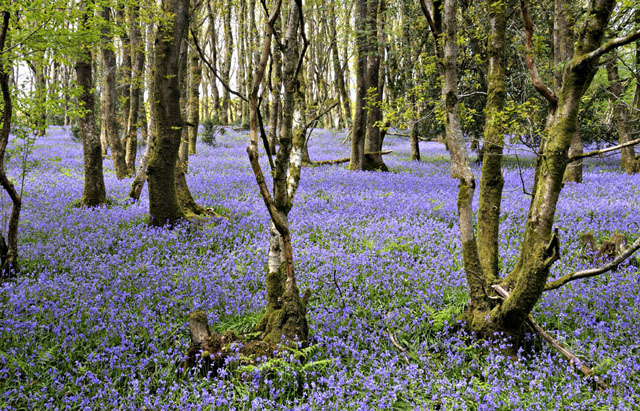
Looking ahead into June there seems a good possibility of summery conditions for at least the first week - it should get quite warm at times and there might even be some proper summer thunderstorms on occasion. A welcome contrast from the past three years!
More soon........
BACK TO WEATHER-BLOG MENU
New! Fine Art Prints & digital images for sale-
Welsh Weather & Dyfi Valley landscapes Slide-Library - Click HERE